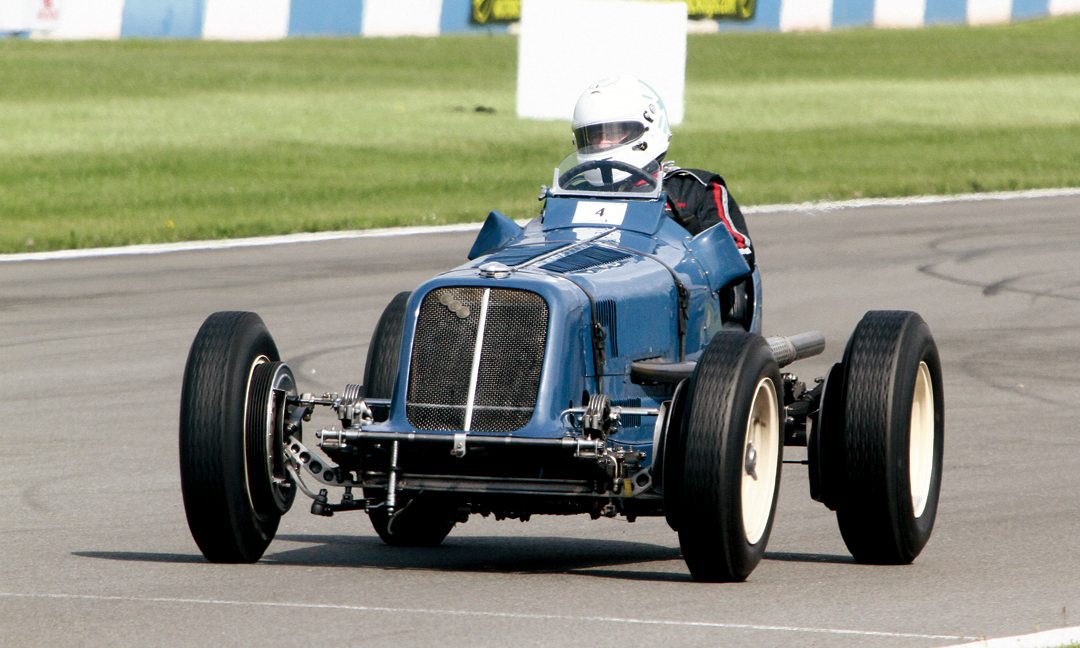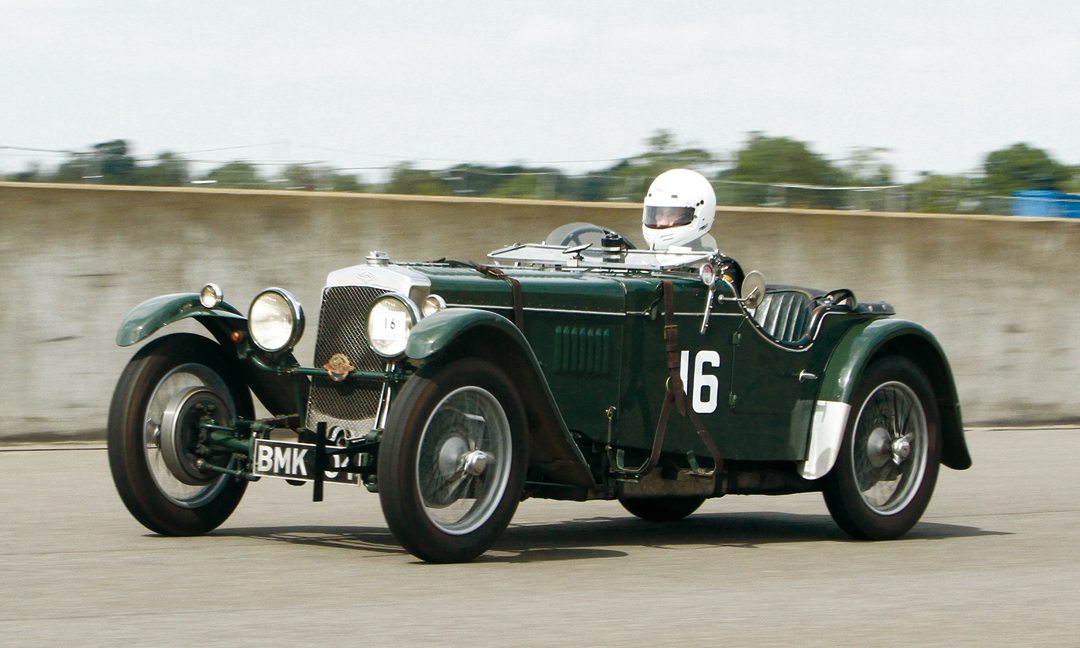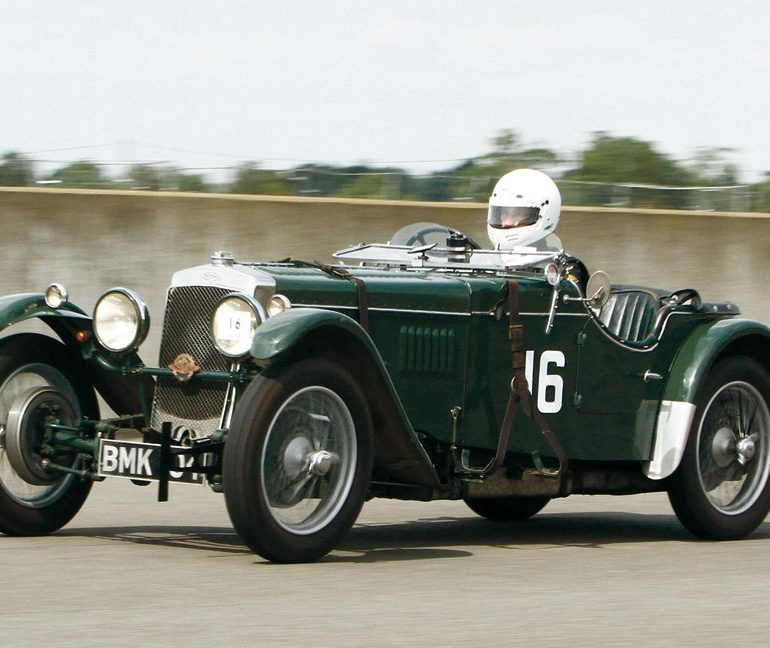From the very beginning of the automobile man built cars to compete with a passion for speed and technology. These innovators are in an elite club, their place in automotive history guaranteed as the creators of a true classic sports car, a genuine thoroughbred.
The development of the racing sports car can be traced to specific manufacturers who at one time in history dominated motor racing, in particular the world’s most challenging road races, such as the Mille Miglia, Targa Florio and endurance contests such as the 24 Hours of Le Mans.
The inspiration to create an automobile that could win in international competition usually came from the mind of one passionate man, an engineer, a genius who put all of his design and engineering skills toward his goals.
Part two of this pre-war market guide will feature more of these exciting cars, their founders and designers, men such as Archibald Frazer Nash of AFN and Sir William Lyons of Jaguar.
Today these pre-war masterpieces are highly sought after by the sophisticated collector. They and their current owners are often invited to partake in the most prestigious historic racing venues world wide. The Le Mans 24 Hour Classic, Mille Miglia Storica, Monaco Historique Grand Prix and the Targa Florio to name but a few.
Due to the age of these cars and their racing heritage, their value is determined by their originality and provenance. Old cars built up from parts are not the same as true complete survivors, a reality that often brings the remaining total down to less than 10 good surviving examples of a particular model.
1934 ERA “A” Type

ERA or English Racing Automobiles was born out of the ambitions of Raymond Mays, Humphrey Cook and Peter Berthon who wished to create a successful English racing car and compete at an international level. ERA was founded in Bourne, Lincolnshire, in late 1933. Raymond Mays, who had success racing Invictas and Rileys, was to be the driver, finance came from Humphrey Cook who had a drapery factory, and car design from Peter Berthon. The company was to focus on the smaller Voiturette class with the aim of later entering Grand Prix competition. The first cars were 1.5-liter supercharged monopostos, or the Formula Two cars of the day. Railton designed the new chassis (they had designed Macolm Campbell’s land speed record holder). The engine was a modified version of the 6-cylinder Riley with a new aluminum cylinder head and forged crankshaft. Running on methanol the 1.5-liter produced 200 bhp and the 2.0-liter 240 bhp. The gearbox was a pre-selector 4-speed. With a weight of 2000 pounds the cars were very fast. The first car built in 1934 was the R1A. Four works cars were built, R1A through R4A or the “A” type. Then in 1935 the production of 13 customer cars was to start. They were designated R1B through R4B or the “B” type. The ERAs dominated the 1.5-liter class in the mid 1930s, with driver Richard Seaman being so successful he earned a drive in the Mercedes Grand Prix team. Prince Bira of Thailand had a team of three cars, two of which were named “Romulus” and “Remus” and went on to win some 20 races. In 1938 a large “E” type chassis was built, named GP1, but design and development was to halt because of World War II. After the war, Mays and Berthon went to BRM. ERA continued on post-war with the “G” type, and even had a young Stirling Moss drive, but without the pre-war success. ERA became known as Engineering Research and Application Ltd. an R&D firm. The days of the ERA “A” type and “B” type will always be remembered. Today we can have the pleasure of seeing these early ERAs out at historic races such as the Goodwood Revival and enjoy the glory days of English motorsports.
Frazer Nash TT – Chain Gang

Archibald Frazer Nash was a mechanical engineer who, with his friend, Ron Godfrey, formed the automotive company GN in 1910. GN produced a simple cycle car from 1910-1914, when WWI started. To aide in the war effort, GN made ammunition. After WWI, automotive production continued. By 1927, the company AFN LTD (Archibald Frazer Nash) was formed. AFN LTD was to leave its mark in the English automotive scene for decades to come. The Fazer Nash TT – Chain Gang was its most successful pre-war car. The TT was light, had good road holding and had great competition success. The TT was named after its success in the Tourist Trophy. It was an open two-seater, powered by four- and six-cylinder, water-cooled 1.5-liter overhead valve engines by Anzani, Gough and Meadows. Peak power in the latest engine was 80 bhp. The suspension was with front and rear leaf springs and beam axle. It weighed 1800 pounds. The transmission was by chain drive, but the name “chain gang” referred more to the Frazer Nash braintrust who built the car. About 350 cars were built from 1924-1939. After WWII, AFN became the Porsche importer for Britain.
Criteria Used For Assessing Valuations for this Guide:
- Degree of Originality
- Overall Condition, Restoration
- Technology, Design, Coachbuilder
- Production Numbers/Rarity
- Competition History
- Ownership History, Documentation
- Modern Event Eligibility
Regional Variances
The prices stated in this guide are based on U.S. values. The values of historic racing cars can vary as much as 25%-35% in other countries, depending on local market appeal, currency rates, import duties, and VAT. Most of the time, we are able to document known sales or closed escrows, as they say in real estate. When this is not possible, a logical estimate of the car’s value is given, based on its sales history and relationship to cars of its type.
The prices stated in this guide are based on U.S. values. The values of historic racing cars can vary as much as 25%-35% in other countries, depending on local market appeal, currency rates, import duties, and VAT.
LEVEL |
VALUATION CATEGORIES |
|---|---|
I |
The best combination of all criteria. |
II |
Satisfies mid-range of criteria. |
III |
In need of restoration. Meets only a few points of criteria |




